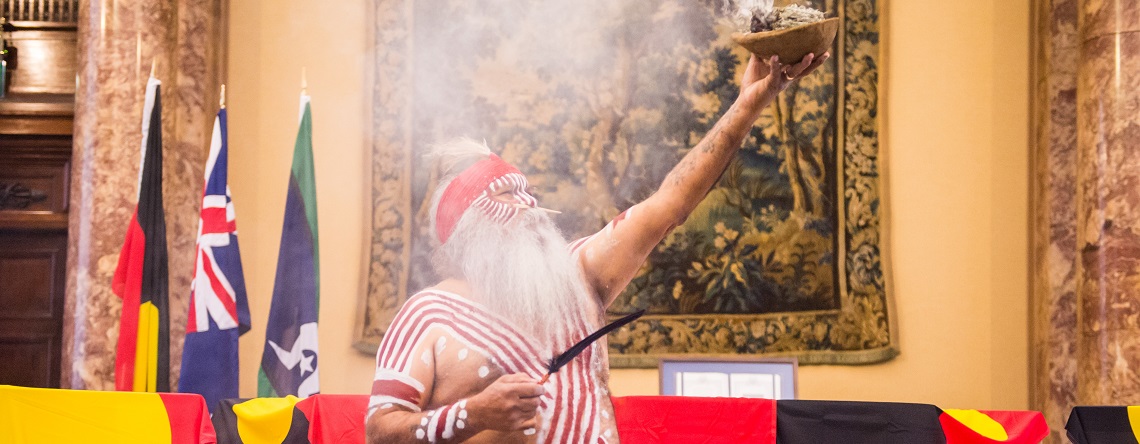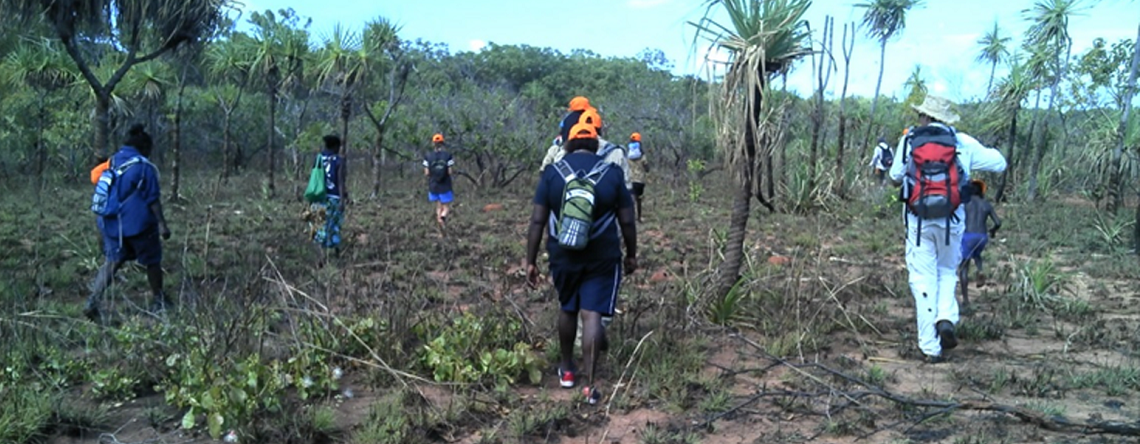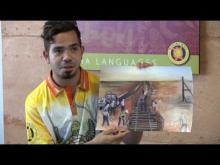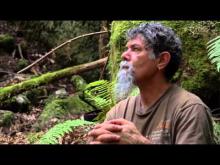Celebrating the world's oldest living cultures
"In Australia we’re fortunate enough to have one of the richest and oldest continuing cultures in the world. The strong connections between culture, language and identity and the strong correlation between language status and educational, employment, training, and physical and mental health outcomes in communities requires a social and cultural determinant focus by all arms of government." - Professor Tom Calma AO
Repatriation of ancestral remains

Ngarrindjeri elder Major Sumner AM, performs a smoking ceremony as part of the handover of thirteen Indigenous ancestral remains, at the Australian High Commission in London in October 2016.
Find out more on the repatriation of ancestral remains
Appreciating Our National Culture
For more than 50,000 years Aboriginal and Torres Strait Islander people have been caretakers of this land. While the diversity of culture, languages and customs within Aboriginal and Torres Strait Islander populations is as broad as the country we live in, the connection to family and the connection to country are at the heart of all Aboriginal and Torres Strait Islander culture.
Aboriginal and Torres Strait Islander culture is a key part of Australia’s national identity and as a nation we must be vigilant in preserving the knowledge and wisdom of the world’s oldest continuous culture. It is with great pride that we showcase to the world the art, languages and traditional practices of our First Peoples.
In our schools, children throughout their schooling now have the opportunity to develop a broader understanding, respect and recognition of Aboriginal and Torres Strait Islander heritage through Australia’s national Foundation to Year 10 Australian Curriculum.
Our national commitment to revitalising and preserving culture will strengthen and nurture existing cultural identity. It will help to increase capability and cohesion within Aboriginal and Torres Strait Islander communities and build a greater understanding of our First Peoples by the broader community, both here and abroad.
Culturally-based activities such as land and sea management, heritage protection, traditional food and medicine production, cultural tourism and arts and craft production can form a significant part of the economic backbone in remote communities. The benefits of such activities are many – they increase employment and economic participation, support the preservation and maintenance of Indigenous cultures and enrich the fabric of Australian society.
More information is available in the full Closing the Gap Prime Minister's Report 2017.
Local solutions
Cultural walks in Wadeye

“For some of the elders, the Walk brought back memories of the old days where they were fit and healthy from walking right through their countries for bush-tucker and ceremony.” – Melissa Bentivoglio, Thamarrurr Rangers.
Find out more on the cultural walks in Wadeye local solution
More local solutions are available on the resources page.


